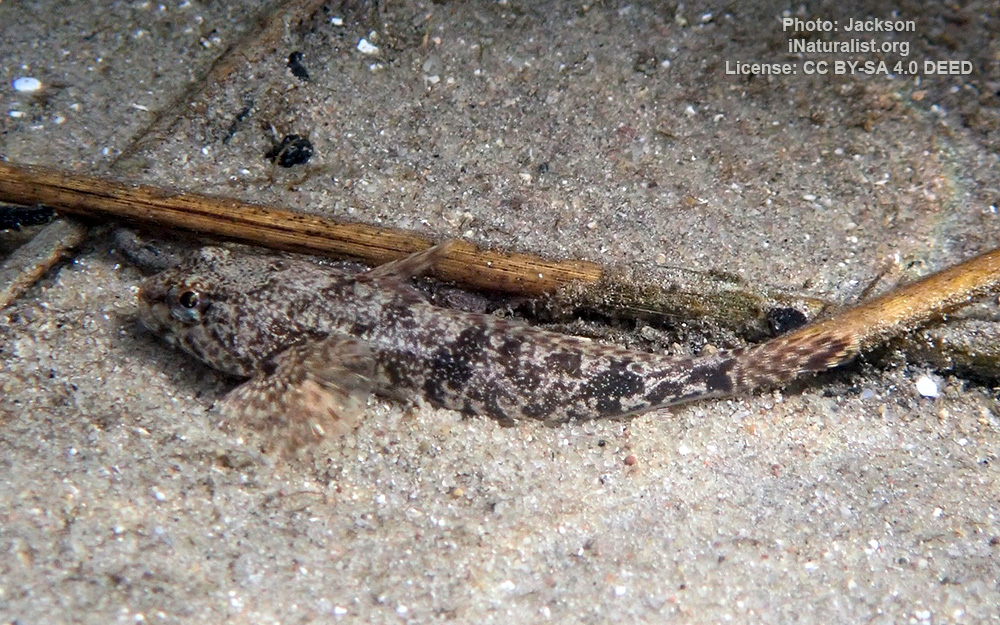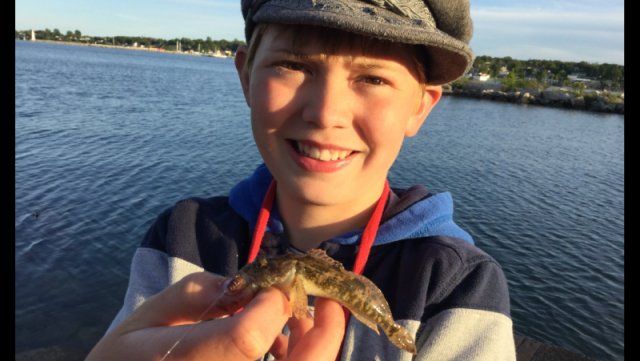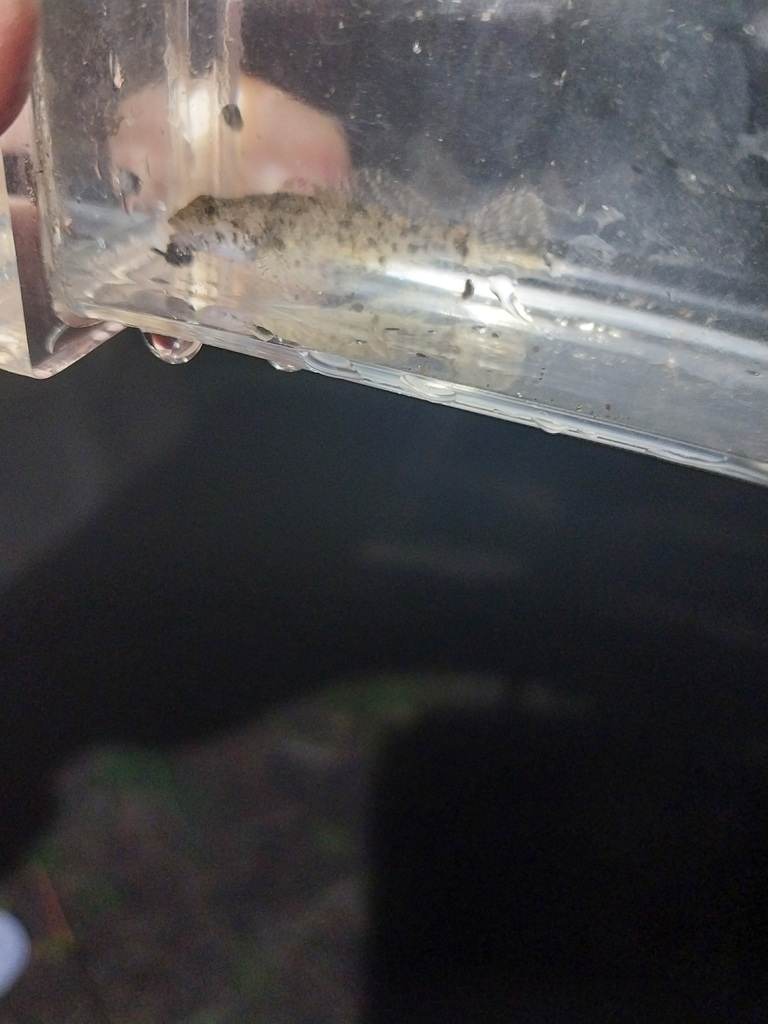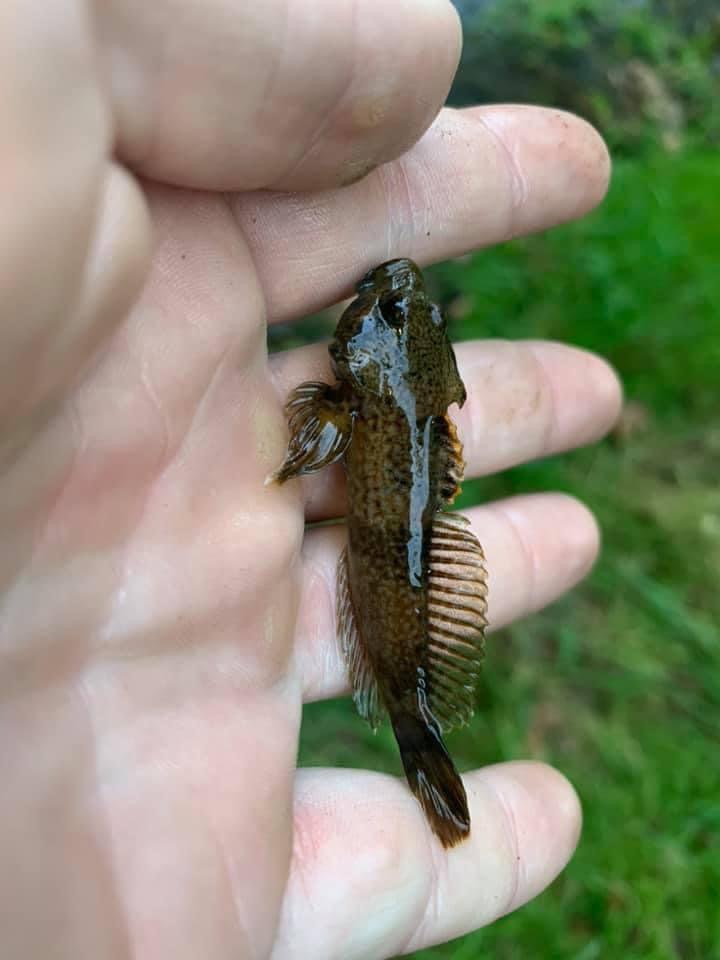Mottled sculpin
(Cottus bairdii)

Image source: Jackson | inaturalist.org
Classification
General data
As the name suggests, its coloration is a combination of bars, spots, and speckles randomly distributed. The large pectoral fins are banded. The first dorsal fin is made of slender and somewhat soft spines, and just barely joins with the second dorsal.
Maximum length is 15 cm.
The mottled sculpin, Cottus bairdii, is known to inhabit a large geographical range in North America. Their natural habitat range is from Northern Canada down to the Mobile and Tennessee River drainage systems. They are also commonly found in streams in the Rocky Mountains along with many streams found throughout the Midwest United States.
The mottled sculpin has historically been found throughout all the environments listed above. For the most part, the geographical range of the mottled sculpin has not changed throughout the years due to it is being a resilient fish and because it has a large temperature gradient in which it can reside. However, in a study by Besser and others in 2007, mottled sculpins have been absent in streams thought to be populated by them in the past due to the species being more sensitive to toxic levels of cadmium, copper, and zinc than species of salmonids. Of these three metals zinc seems to be the most threatening to the mottled sculpin. One study found mottled sculpins to be the third most sensitive aquatic species to zinc. Therefore, the biggest threat to the species would be high mining areas or areas where coal is burned frequently.















